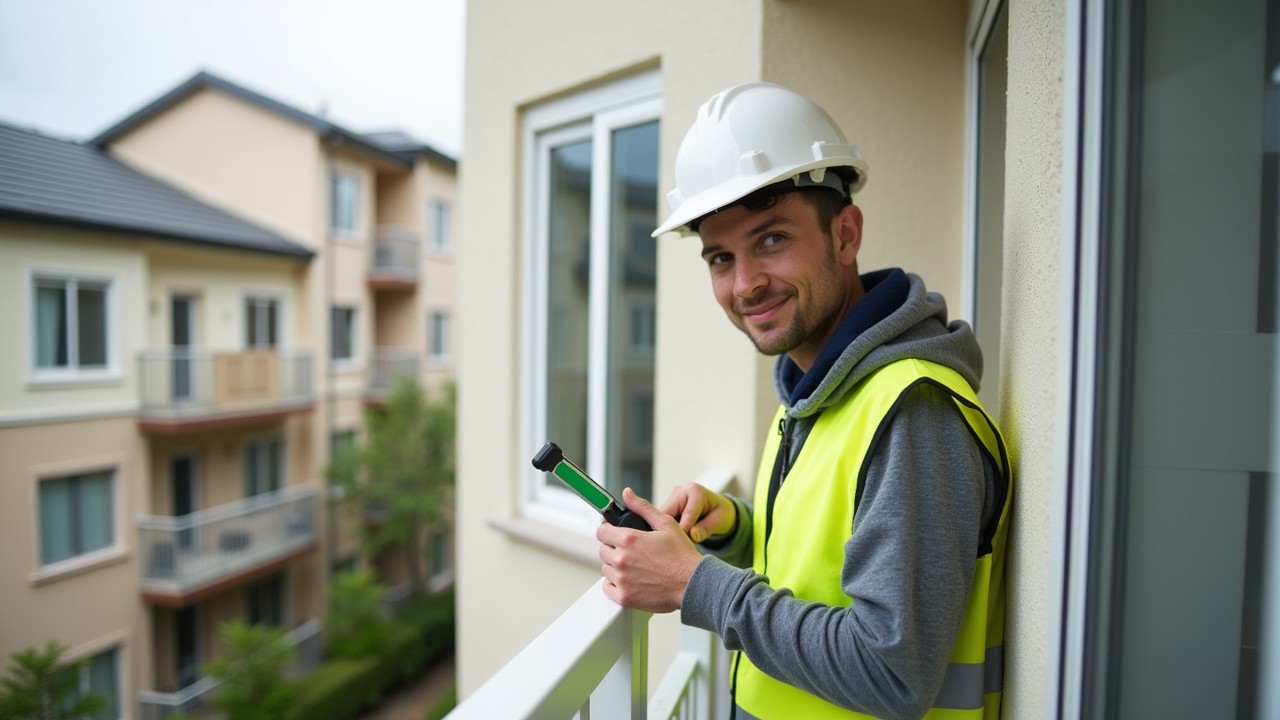Understanding Balcony Load Limits: How Much Weight Can Your Balcony Hold?

Table of Contents
Why Knowing Your Balcony’s Load Limit Matters
Factors Influencing Balcony Load Limits
Ensuring Compliance with SB326 and SB721
Balconies offer a delightful extension to our living spaces, providing a spot to relax and enjoy the outdoors. However, it’s crucial to understand that every balcony has a weight limit, and exceeding this can lead to structural failures with potentially catastrophic consequences. Regular inspections, as mandated by California’s SB326 and SB721, are essential to ensure your balcony remains safe and compliant.
Why Knowing Your Balcony’s Load Limit Matters
Understanding your balcony’s load-bearing capacity is vital for several reasons:
- Safety: Overloading can cause structural damage or collapse, posing serious risks to occupants.
- Compliance: Adhering to regulations like SB326 and SB721 helps avoid legal issues and potential fines.
- Longevity: Proper use and maintenance extend the lifespan of your balcony.
General Guidelines for Balcony Load Capacities
Balcony load limits can vary based on design, materials, and construction standards. Generally, balconies are designed to support a specific live load, measured in pounds per square foot (psf):
- Residential Balconies: Typically designed for 40 to 60 psf, accommodating normal use with people and standard furniture.
- Public or Commercial Balconies: Often designed for 100 psf or more, to support larger gatherings.
For example, a 100-square-foot residential balcony designed for 60 psf should support up to 6,000 pounds evenly distributed. However, it’s essential to consult with a structural engineer to determine the exact capacity of your specific balcony.
Factors Influencing Balcony Load Limits
Several factors affect how much weight your balcony can hold:
- Construction Materials: Wooden balconies may have different load capacities compared to those made of steel or concrete.
- Design and Age: Older balconies or those with unique designs might have reduced load-bearing capabilities due to wear and tear.
- Maintenance History: Regular upkeep ensures that the balcony maintains its structural integrity over time.
Signs Your Balcony May Be Overloaded
It’s important to recognize indicators that your balcony might be under too much stress:
- Visible Sagging: A noticeable dip or sag in the structure.
- Cracks or Splits: In the flooring, supports, or connection points.
- Creaking or Unusual Noises: Sounds when weight is applied.
- Water Pooling: Indicates potential structural issues affecting drainage.
If you observe any of these signs, it’s imperative to reduce the load immediately and consult a professional for an assessment.
Contact DrBalcony for a professional inspection!
Ensure the safety of your balcony and living space with DrBalcony – We’re a Tech Engineering firm that specializes in California SB326 & SB721 balcony inspections. Over 300+ completed projects in California.
Contact DrBalcony For A Professional Inspection!
Ensure the safety of your balcony and living space with DrBalcony – We're a Tech Engineering firm that specializes in California SB326 & SB721 balcony inspections. Over 300+ completed projects in California.
Ensuring Compliance with SB326 and SB721
In California, SB326 and SB721 mandate regular inspections of exterior elevated elements, including balconies:
- SB326: Applies to condominiums and common interest developments, requiring inspections every nine years.
- SB721: Pertains to multifamily rental properties with three or more units, mandating inspections every six years.
These inspections assess the structural integrity and load-bearing capacity of balconies to prevent accidents. Engaging a licensed professional ensures that your property complies with these regulations and addresses any potential issues promptly.
Tips to Prevent Overloading Your Balcony
To maintain a safe balcony environment:
- Know Your Limits: Understand the specific load capacity of your balcony.
- Distribute Weight Evenly: Place heavy items, like planters or grills, in a way that spreads their weight across the surface.
- Avoid Permanent Heavy Fixtures: Refrain from installing heavy hot tubs or large water features unless your balcony is specifically designed to support them.
- Regular Inspections: Schedule periodic assessments to detect and address potential structural issues early.
Conclusion
Understanding and respecting your balcony’s load limits is essential for safety, compliance, and longevity. Regular inspections, as required by SB326 and SB721, play a crucial role in identifying potential issues before they become serious problems. By staying informed and proactive, you can enjoy your balcony with peace of mind.
For professional balcony inspections and to ensure your property meets all safety and regulatory standards, contact DrBalcony today.
FAQ Section: Top Questions & Answers
My property is well-maintained. Do I really need SB-326/SB-721 inspections?
YES! Even with excellent maintenance, hidden issues can develop due to construction errors, material flaws, or severe weather exposure. Inspections are about ensuring those don’t turn into major problems.
Our balconies were inspected a few years ago – isn’t that enough?
Unfortunately, no. California laws mandate inspections on a set schedule, often every 6 years. Deterioration can happen quickly, making regular assessments essential.
Can I use my regular handyman for the balcony inspection?
It’s not recommended. Unless they hold specific licenses (architect, structural engineer, etc.) their inspection won’t be considered valid for SB-326/SB-721 compliance.
What if the inspection uncovers major issues?
First, don’t panic! Early detection often means less extensive (and expensive) repairs are needed. Work with your inspector to prioritize fixes, and explore if they offer repair services for a streamlined solution.
I’m worried about the cost of inspections. Are there any resources to help?
Start by getting detailed quotes from multiple companies. Factor in that proactive inspections help you avoid even bigger costs down the line due to neglected problems. Some property management associations offer guidance on budgeting for balcony compliance.
